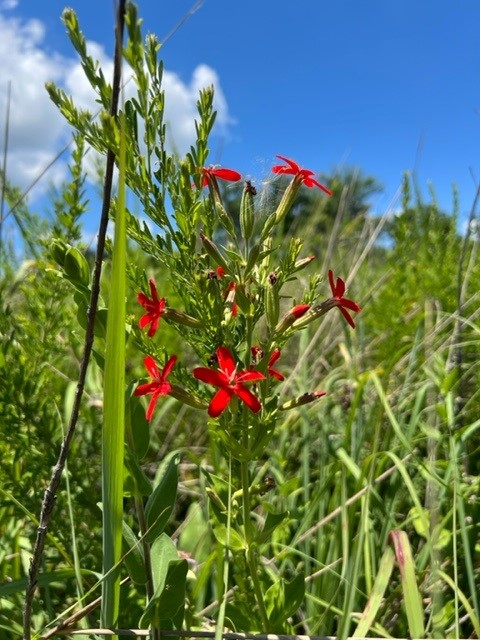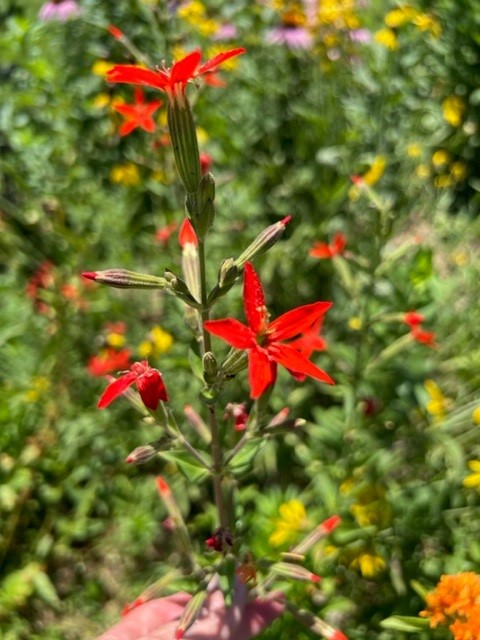Royalty in the Prairie: Royal Catchfly


When visiting a prairie, you might just be greeted by bright red flowers like these. (Photos: Amy Roell)
Prairie flowers are at the peak of blooming right now. Most of the flowers (also known as forbs) are shades of yellow, white and purple. There is a smattering of oranges and reds, but those are few in number. However, one bright red prairie flower blooming right now is royal catchfly.
Royal catchfly (Silene regia) is a true midwestern plant, found in Oklahoma, Kansas, Arkansas, Missouri, Illinois, Indiana, Kentucky, Tennessee, Georgia, Alabama, northern Florida and of course, Ohio. It grows best in full sun to partial shade, so it can be found in prairies, savannahs, barrens and even open woods, as long as the soil is well drained. It can handle drought conditions and even rocky, sandy soil. It can reach heights of 4 to 5 feet but needs the support of other prairie plants such as little bluestem, prairie dropseed and others to stay upright at those heights.
A Name Not-So Sweet


‘Catchfly’ refers to the sticky substance that can be found on the tube-like structure called the calyx of the flower. Insects get stuck in that sticky substance when they try to climb up the flower to get the nectar that is way, way down in the calyx. Insects try to get the nectar without going in from the petals past the stamens and anthers (the long lender stalks with knobs at the end the stick up from the flower) to pick up and distribute pollen. ‘Royal’ refers to its Latin species name regia, which means royal, and probably refers to the deep, rich crimson color.
A Mix of Pollinators


The shape of the flower and the color are suited for the larger swallowtail butterflies and hummingbirds. The five petals create a landing pad for their small feet. The swallowtails and hummingbirds can see the color and their long tongues can reach the sweet nectar from the end of the calyx. Insects in general cannot see red, and therefore, are not readily attracted to royal catchfly. A pollinator must pass by the stamens and anthers to pick up the pollen. It is this pollen that is spread to other flowers that will create the seeds for future plant.
Royal catchfly blooms in July and August; any one plant blooms for about a month. Once it has been pollinated, seeds will form. The small black seeds are distributed when the wind shakes them loose, so they do not tend to go far from the mother plant.
If you venture out soon along the Shaker Trace Loop at Miami Whitewater Forest on a bike, in-line skates or even a long walk/run, keep your eye out for pops of red along the trail. Take a break, get a drink of water yourself, and take some time to watch and see if you can glimpse a swallowtail or hummingbird coming to the flowers for a drink. If not, just enjoy this unique flower and the beautiful color it brings to the prairie!
—
Amy Roell
Director of Programming
